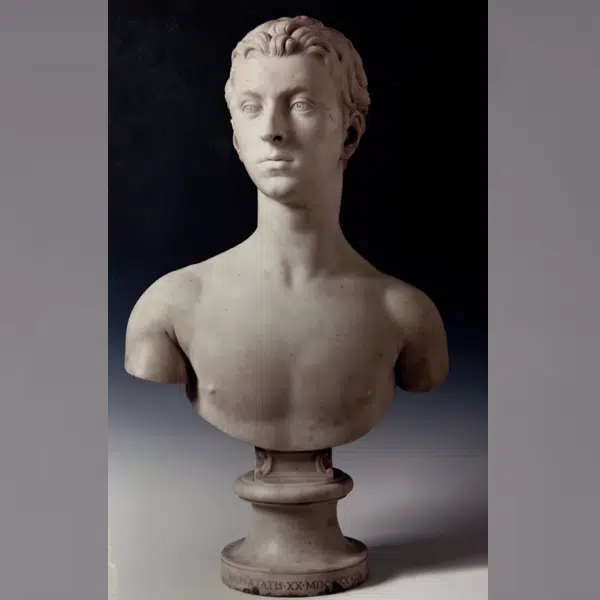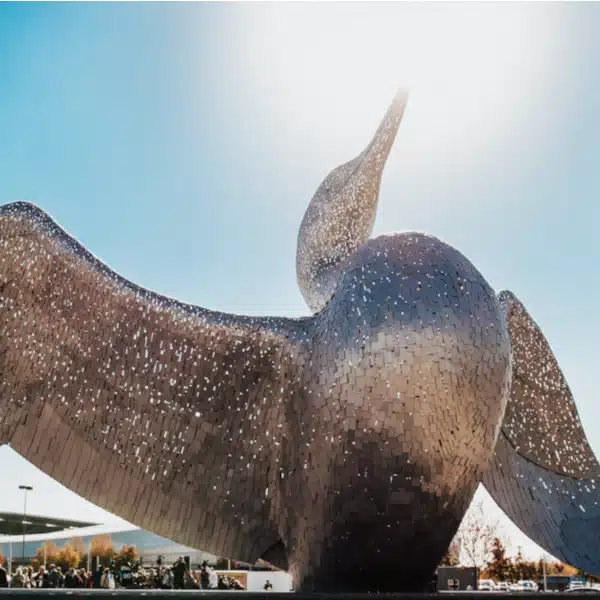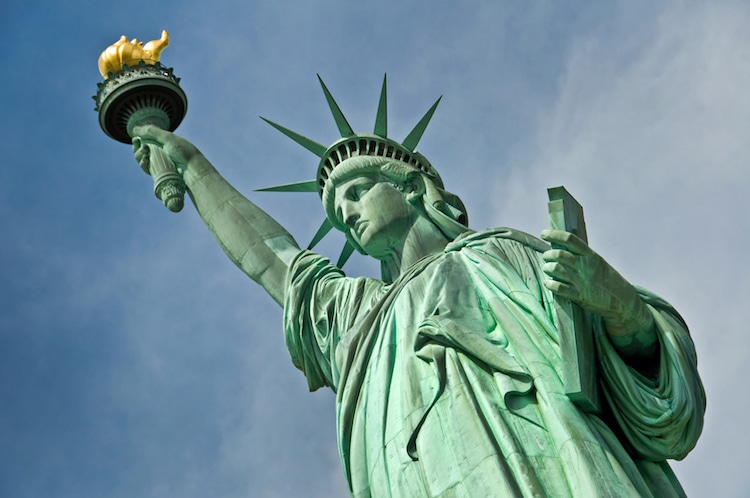
Stock Photos from Delpixel/Shutterstock
For centuries, the Statue of Liberty has stood as an illuminating symbol of independence. Situated in the New York Harbor, the colossal sculpture has become a fixture of the city's skyline, captivating native New Yorkers and arriving immigrants alike with its allegorical beauty.
If you want to learn more about Lady Liberty, you've landed in the right place. With these 11 enlightening facts about the Statue of Liberty, we hope to shed some light on the history of this iconic statue.
Location | Liberty, Island, New York City, New York |
Dedicated | October 28, 1886 |
Height | 151 ft / 46 meters (statue only); 305 ft / 93 meters (from ground level) |
Material | Copper |
Builder | Gustave Eiffel |
Sculptor | Frédéric Auguste Bartholdi |
The Statue of Liberty's full name is “Liberty Enlightening the World.”
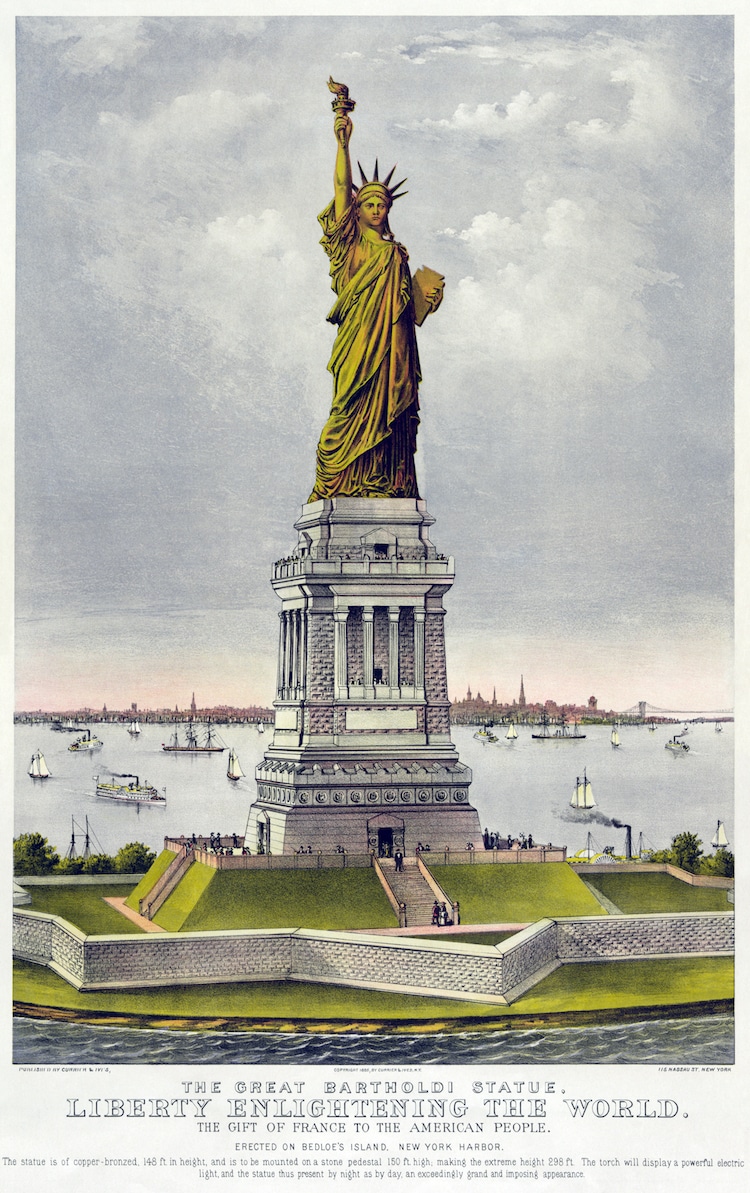
“The great Bartholdi statue, liberty enlightening the world: the gift of France to the American people,” 1885 (Photo: Public domain via Wikimedia Commons)
While most people know the monument as the Statue of Liberty, this title is actually nothing more than a mainstream nickname. Officially, the sculpture was christened Liberty Enlightening the World (“La Liberté éclairant le monde”), a poetic name picked out by the French.
While these monikers may vary, both designate the figure as a depiction of “Liberty”—a translation of the Latin Libertas, a Roman goddess who embodied the idea of freedom.
France gave it to America in 1886.
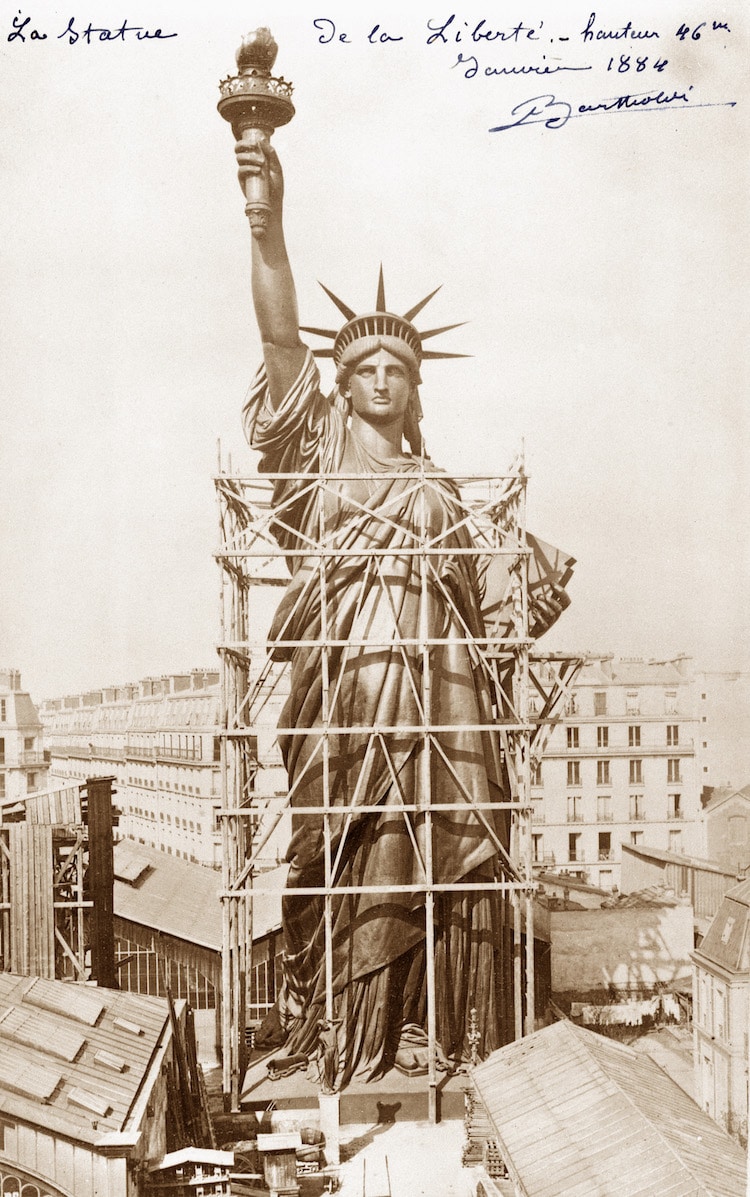
Liberty Statue, work in progress, 1884 (Photo: Public domain via Wikimedia Commons)
Wondering why the origin of the sculpture's name can be found in France? The answer is simple: Lady Liberty is a French export!
In 1875, French sculptor Frédéric Auguste Bartholdi and his team—including Gustave Eiffel, the designer of the world-famous Eiffel Tower—began constructing the copper statue as a gift to America. Specifically, it was intended as a gesture of friendship following the American Civil War.
While the sculpture was still in progress, pieces were exhibited at the World's Fair in Paris—and, even today, mementos of the monument can be found in the City of Light.
The statue’s face may be modeled after the sculptor’s mother.
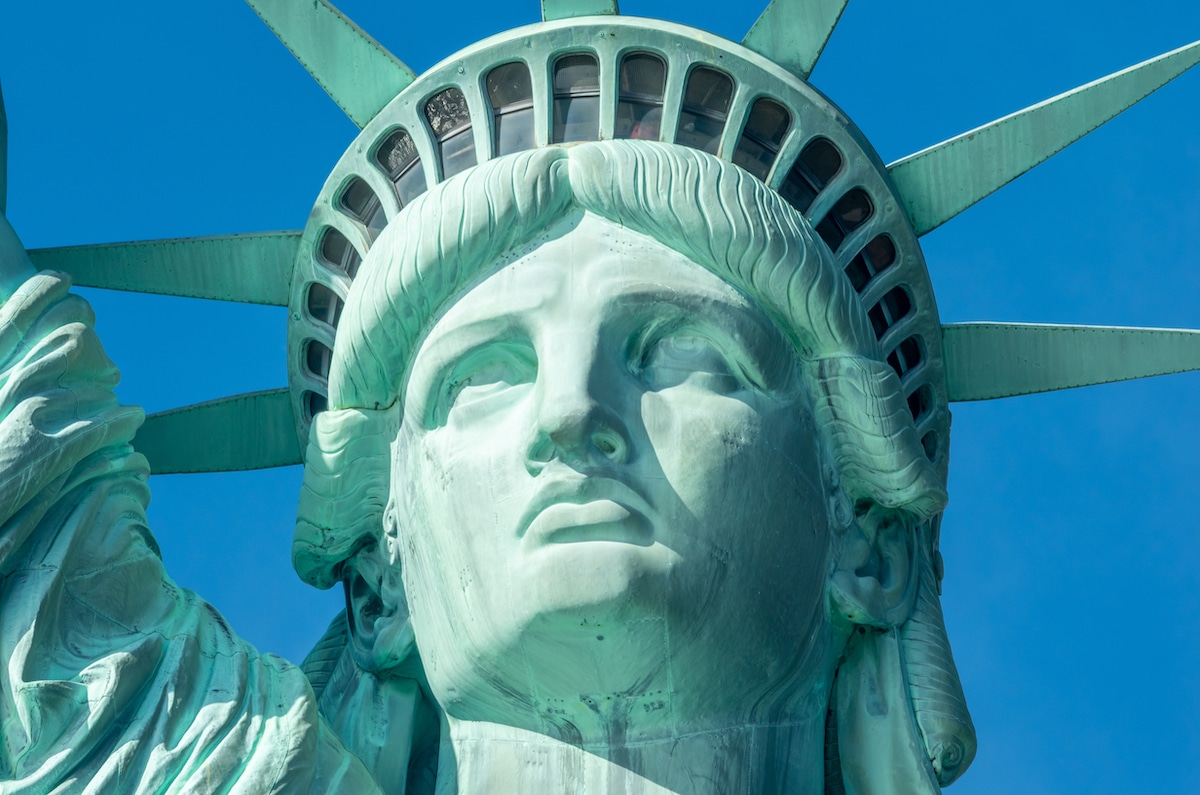
Photo: Stock Photos from Belikova Oksana/Shutterstock
The Statue of Liberty was inspired by a few women, including the Roman goddess Libertas and an Arab woman from Bartholdi’s earlier proposal for an Egyptian statue. The face of the statue came from inspiration a little closer to home, the sculptor’s mother Charlotte.
It represents Libertas, the Roman goddess of freedom.
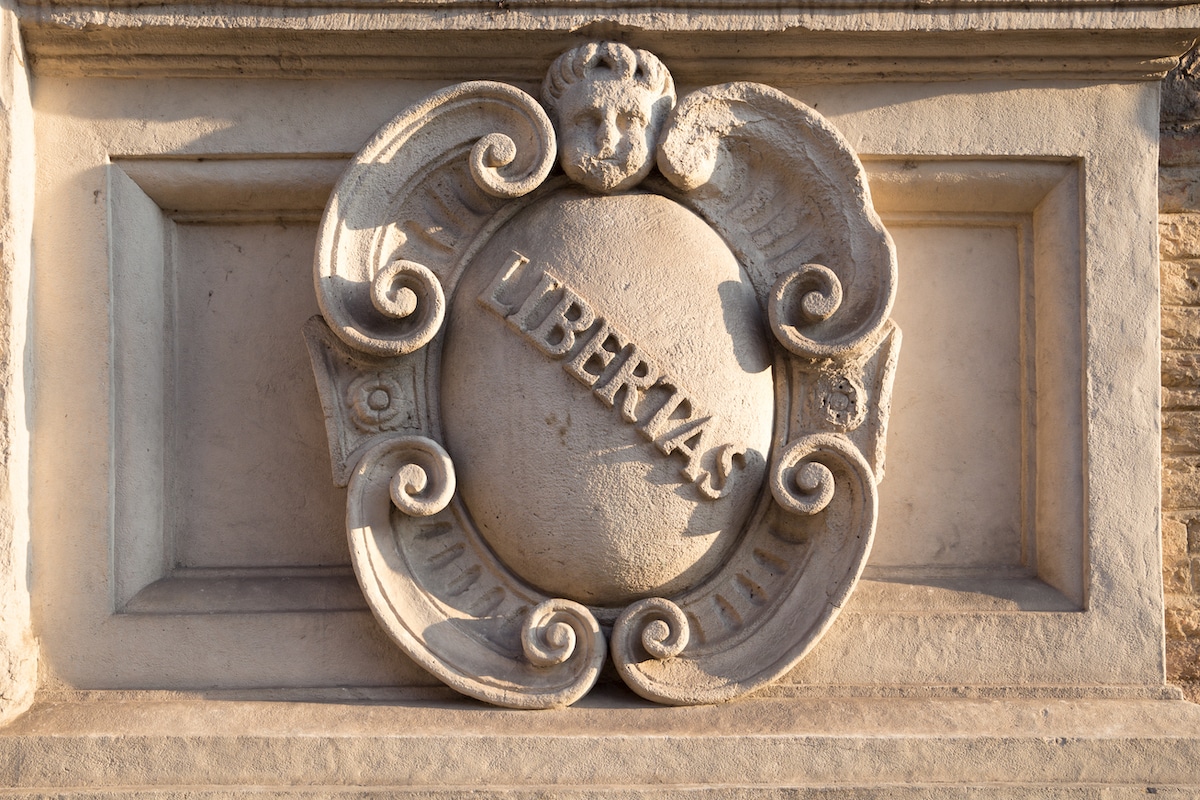
Vintage ornament of Libertas the Roman goddess on a historic building (Photo: Stock Photos from Predrag Jankovic/Shutterstock)
Libertas stood for freedom and independence both for individuals and in society. Libertas was often depicted as a robed woman and so was used by Bartholdi as inspiration for the Statue of Liberty.
Small-scale copies are scattered around Paris.

Photo: Stock Photos from EQRoy/Shutterstock
Throughout Paris, several replicas pay homage to Lady Liberty's French roots.
In the Musée d'Orsay, there is a 9.4-foot-tall copy cast by Bartholdi himself. This sculpture used to be in the Luxembourg Gardens. Today, a newer copy can be found in its original place.
Another bronze replica of the same height stands outside the Musée des Arts et Métiers, a museum fittingly dedicated to industrial design. Inside the museum, visitors will also find the original plaster maquette crafted by Bartholdi.
A final copy can be found on the Île aux Cygnes, a man-made island in the Seine River. This sculpture was actually a gift from America as a way to say “thank you” for Liberty Enlightening the World.
The statue was brought to New York in pieces.
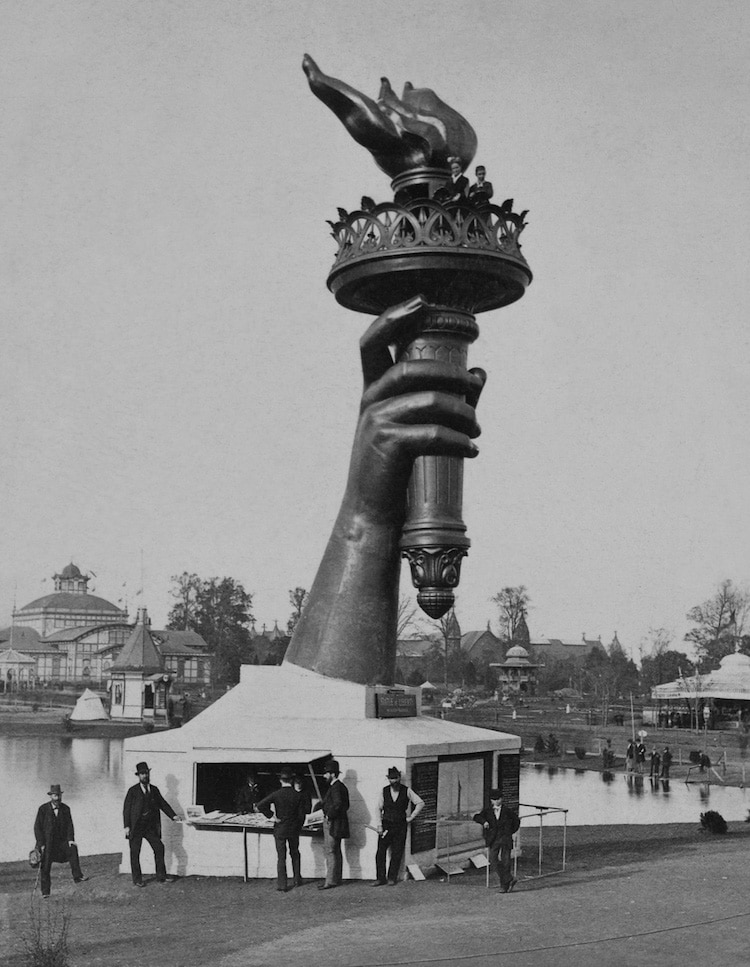
Statue of Liberty Arm, 1876, Philadelphia Centennial Exposition (Photo: Public domain via Wikimedia Commons)
Given the substantial size of the New York-based sculpture, the French decided to ship it as a series of 350 parts. In 1884, once it reached Bedloe Island—known today as Liberty Island—it was pieced together and placed on a pedestal preliminarily built by the Americans.
Filmmakers love wrecking the Statue of Liberty.

Photo: Stock Photos from OFC Pictures/Shutterstock
If you’re a film buff, you might have seen the destruction of the Statue of Liberty a few times. This might be the case because the statue is such an iconic symbol that seeing it destroyed leaves a lasting impression. You can find Lady Liberty in disrepair in Independence Day, The Day After Tomorrow, and Planet of the Apes.
It functioned as a lighthouse for 16 years.
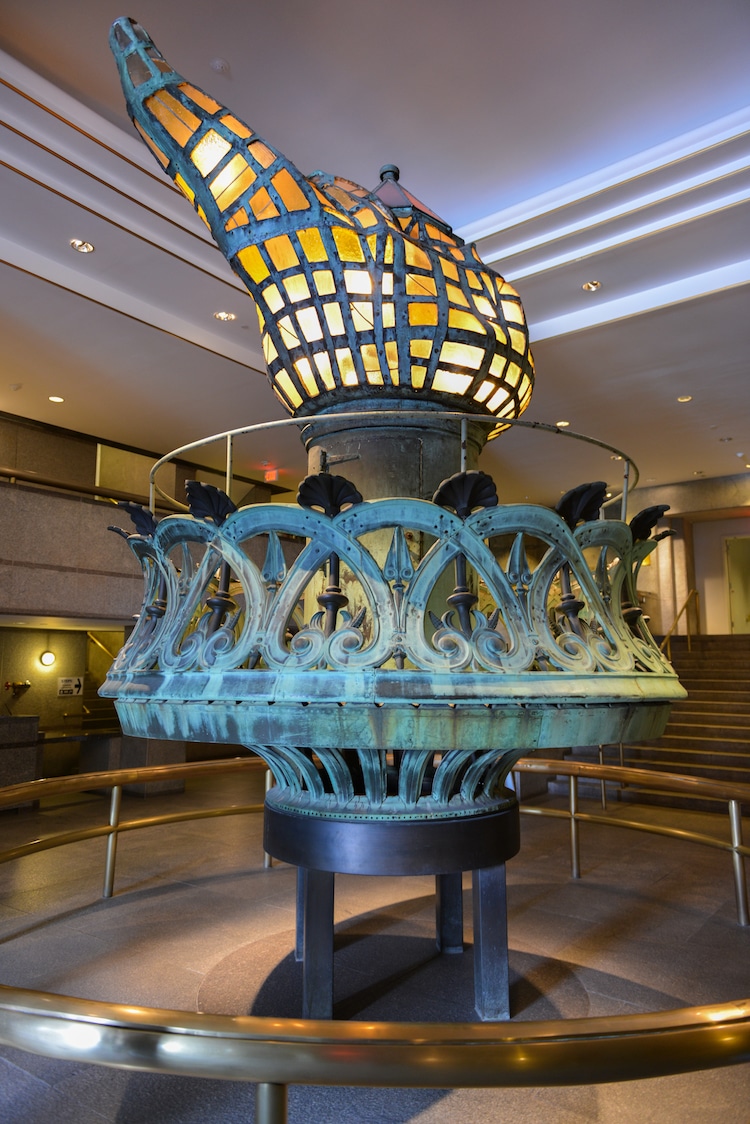
The original torch (Photo: Stock Photos from Felix Lipov/Shutterstock)
Two years after it made its grand debut in New York Harbor, Lady Liberty adopted an illuminating role. For 16 years, it doubled as a lighthouse, with the figure's symbolic lamp serving as the beacon.
Unfortunately, this light source proved too dim for ships to see, and the statue stopped operating as a lighthouse under the order of President Theodore Roosevelt.
It is struck by lightning about 600 times a year.
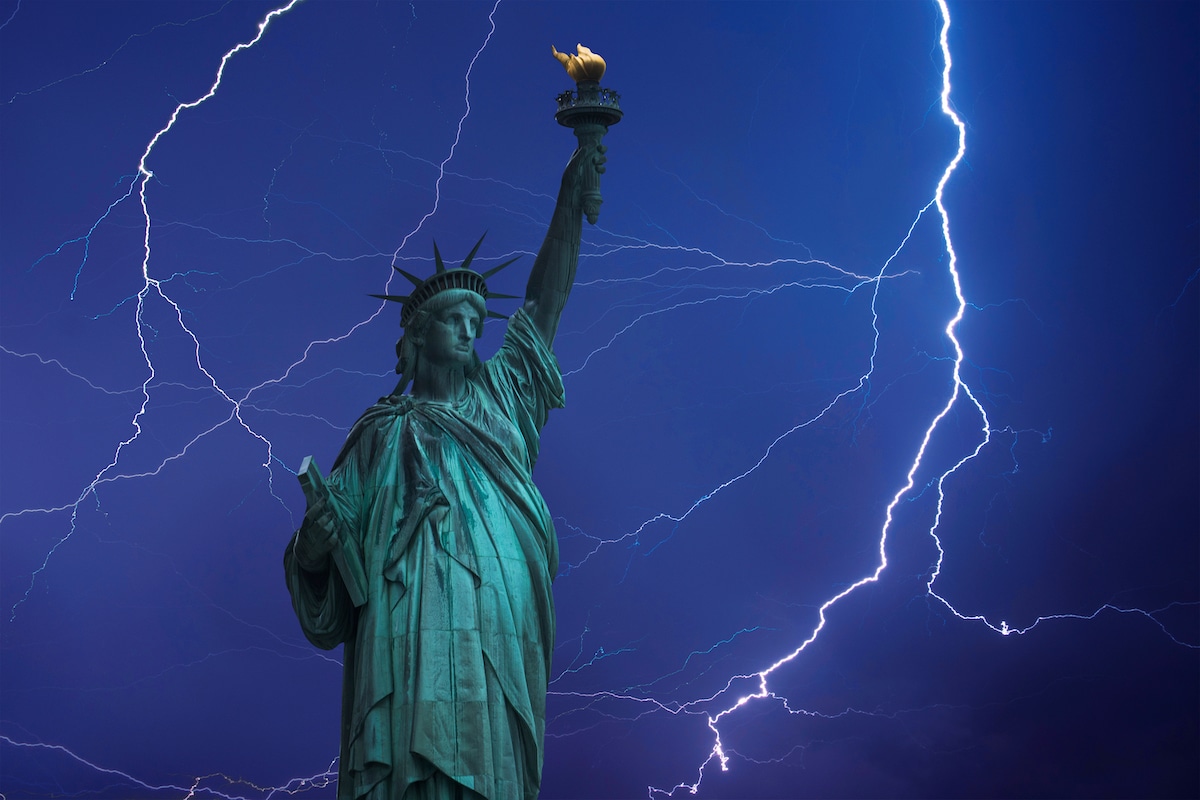
Photo: Stock Photos from Skreidzeleu/Shutterstock
It is estimated that the Statue of Liberty is struck by lightning 600 times a year, though this number is an average and depends on weather conditions.
The statue is filled with symbolism.

Photo: Stock Photos from Chris Parypa Photography/Shutterstock
Still, even without a specific function, the Statue of Liberty continued to play an important role. Specifically, since its onset, it has been celebrated for its complex and comprehensive symbolism.
From her head (her crown consists of seven rays, referencing the seven continents and seas) to her toes (broken shackles lay around her feet), Lady Liberty is cloaked in metaphors. Leading the masses from oppression, in one hand she holds a torch representing enlightenment; in the other, a tablet of the law is inscribed with “JULY IV MDCCLXXVI,” the date of American independence.
Even her positioning is symbolic, as she faces South-East to welcome ships—namely, those carrying immigrants to the United States—into the harbor.
Its famous inscription was written to raise funds for its construction.
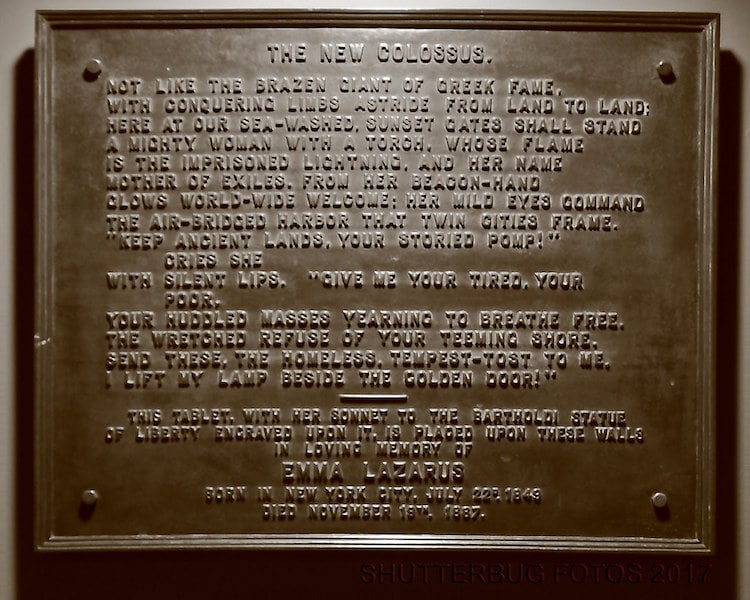
Photo: Sean O'Neill via Flickr (CC BY-ND 2.0)
In addition to the symbolism of its strategic orientation, the statue is inherently associated with immigration because of The New Colossus, a poem inscribed on a plaque attached to its pedestal.
Written by American poet Emma Lazarus, this sonnet—and, specifically, the lines: “Give me your tired, your poor, Your huddled masses yearning to breathe free”—has come to represent what the statue stands for.
Lazarus penned this poem, in which she nicknamed the statue the Mother of Exiles, in order to raise money for the construction of the 89-foot stone pedestal, which the Americans were responsible for.
It sits atop a fort meant to protect New York City
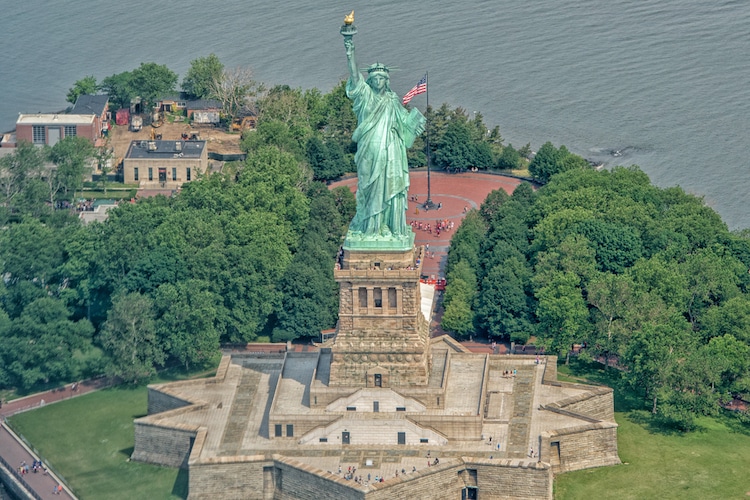
Photo: izanbar/Depositphotos
The star-shaped structure that the statue sits on is iconic, but it wasn't built specifically for Lady Liberty. The pedestal sits on the remains of Fort Wood, which was built between 1808 and 1811. The fort was designed to protect the city from British invasion and is named Fort Wood after an Army engineer who died during the War of 1812. The remains of the fort were actually used as an army post until 1937, but is now the property of the National Park Service.
It cost only $500,000.

Photo: Stock Photos from Artem Avetisyan/Shutterstock
Though this amount may seem surprisingly low, the $500,000 would amount to over $10 million today.
The statue wears a size 879 shoe.
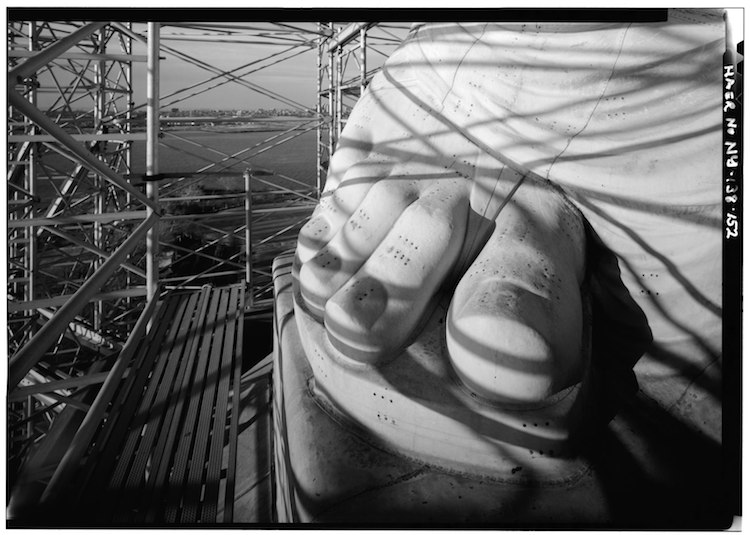
Lowe, Jet, Detail of right foot, December 1985 (Photo: Public domain via Wikimedia Commons)
Given the immense size of this pedestal, it is no surprise that Lady Liberty weighs a whopping 225 tons—and has a height to match.
From the bottom of the base to the tip of the torch, the Statue of Liberty measures 305 feet and 1 inch tall. To climb to the crown, visitors must ascend 354 stairs, or 20 stories, with Lady Liberty's size 879 shoe serving roughly as a halfway point.
The torch has been closed since 1916.

Front page of July 31, 1916 “The Boston Globe” (Photo: The Boston Globe via Wikimedia Commons, Public domain)
While it's still possible to visit the crown, Lady Liberty's torch has been closed for more than a century. The public has not had access since the Black Tom explosion, an act of sabotage by agents of the German Empire. The explosions took place on July 30, 1916, killing four people and destroying military equipment that had a value of $20 million ($500 million in 2022). The incident took place prior to America's entry into World War I and caused structural damage to the Statue of Liberty's torch.
In the 1980s, Lady Liberty received a much-needed makeover.
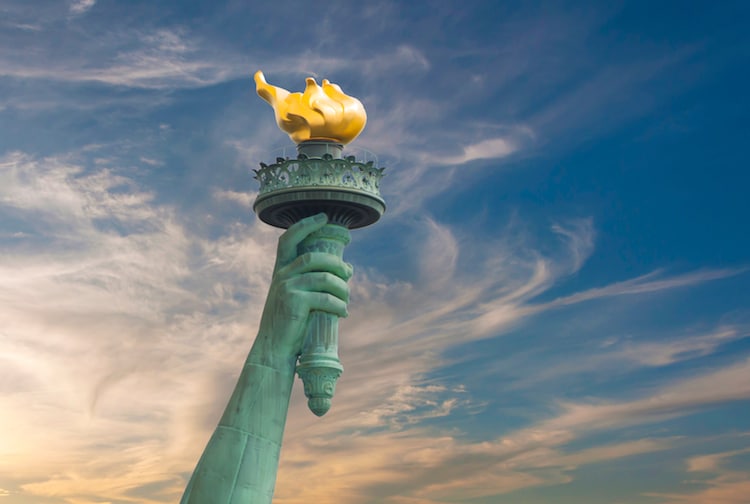
Photo: Stock Photos from PannaPhoto/Shutterstock
To mark its centennial, the Statue of Liberty was renovated from 1984-1986. This restoration project was a team effort made possible by scientists, engineers, government organizations, and other professionals.
It was a huge undertaking, which involved filling holes in the copper, replacing rusted iron pieces with stainless steel substitutes, and adding a dazzling gold-leaf touch to the torch.
The spikes on the crown symbolize liberty as a universal concept.
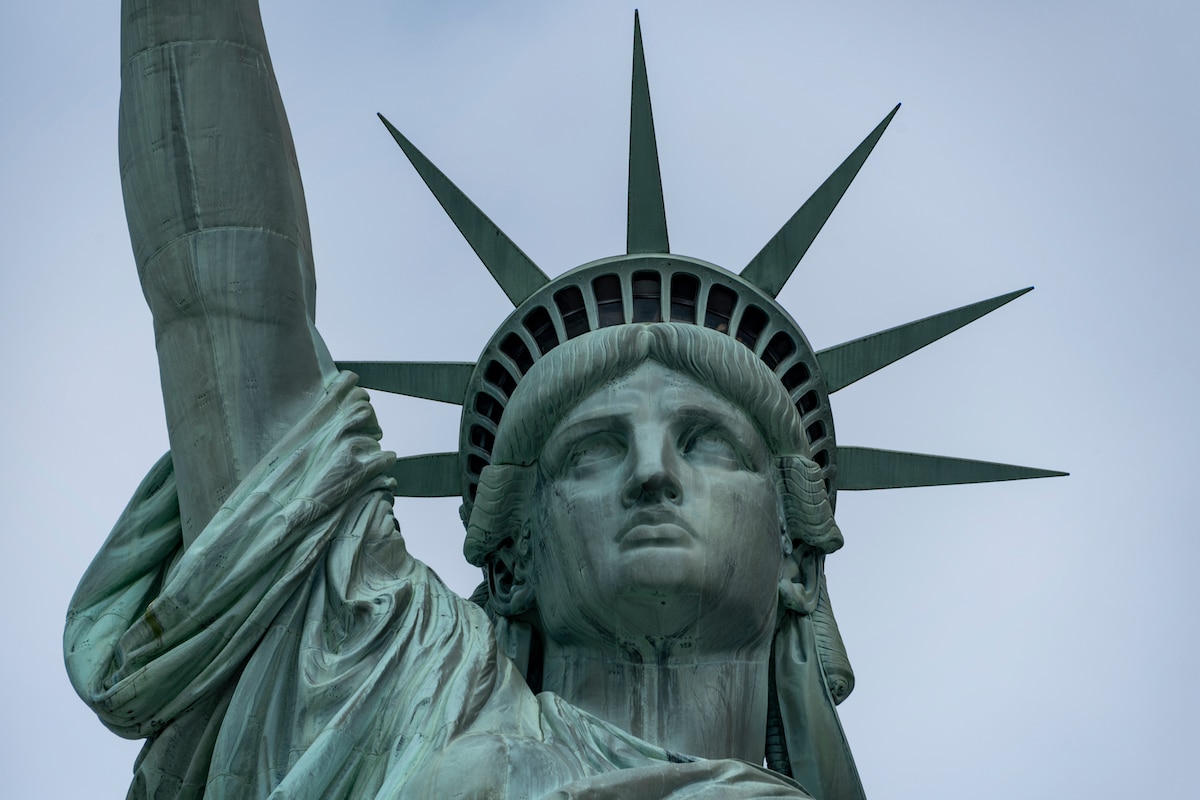
Photo: Stock Photos from JoanneJean/Shutterstock
The spikes on the Statue of Liberty’s crown represent the Seven Seas and seven continents, meaning that though this is an American monument, the freedom it stands for is a universal concept.
There are 25 windows in the crown.
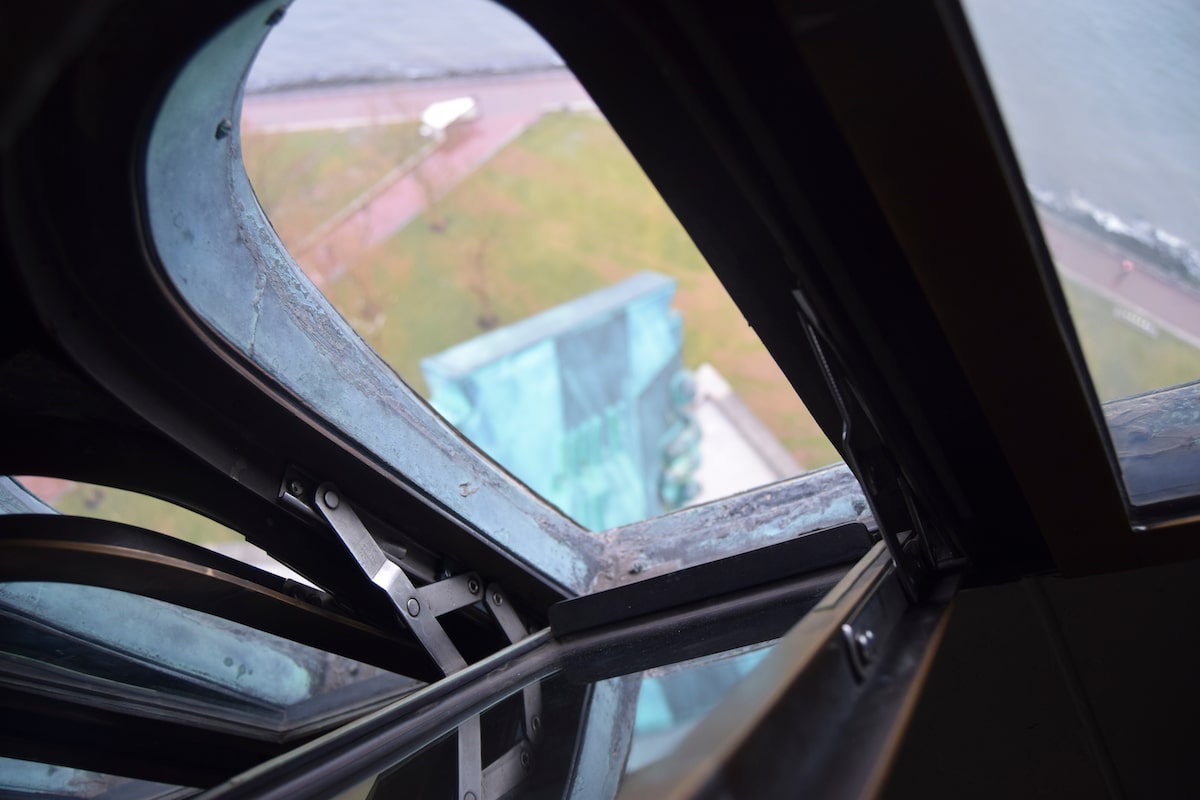
View from the crown of the Statue of Liberty (Photo: Stock Photos from CrookshanksPhotography/Shutterstock)
Though they are difficult to see from the ground, the crown of the statue includes 25 windows that allow for an unparalleled view of New York and New Jersey.
There are 393 steps taking visitors up to the crown.
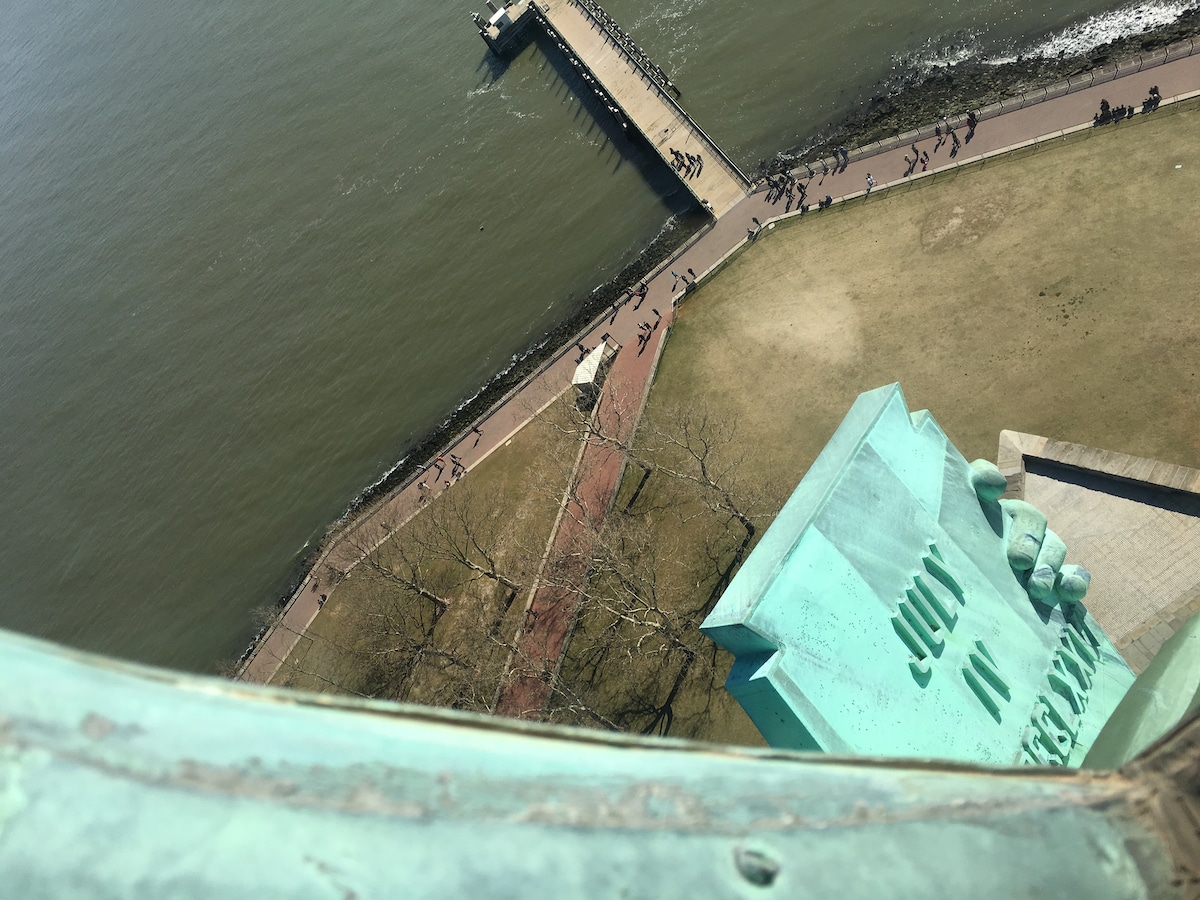
Looking down from inside the Statue of Liberty’s Crown (Photo: Stock Photos from PatSimmons/Shutterstock)
To look through the windows in the crown, visitors will have to climb 393 steps. This distance is roughly the vertical distance of 27 levels in a normal building.
Its green color is here to stay.
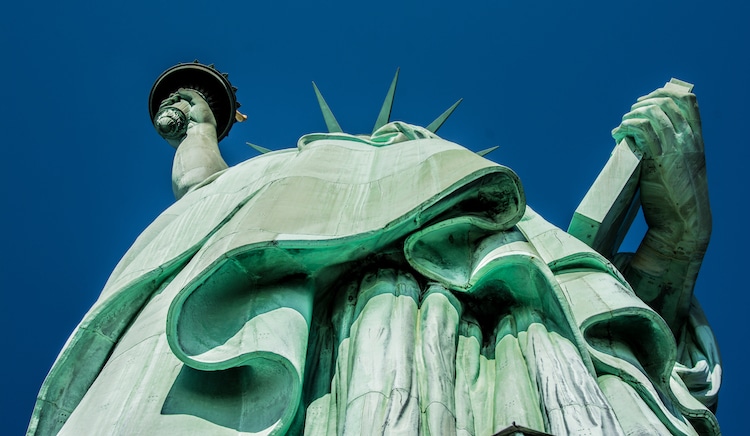
Photo: Stock Photos from Life In Pixels/Shutterstock
While the restoration team thoroughly cleaned the statue's copper surface, its iconic green color remained. Known as a patina, this coating is a result of the copper's oxidation. So, while the sculpture was originally the reddish-brown color of a penny, it has gradually turned a shade of jade green—and will remain that color for years to come.
Laboulaye hoped it would inspire France as well.
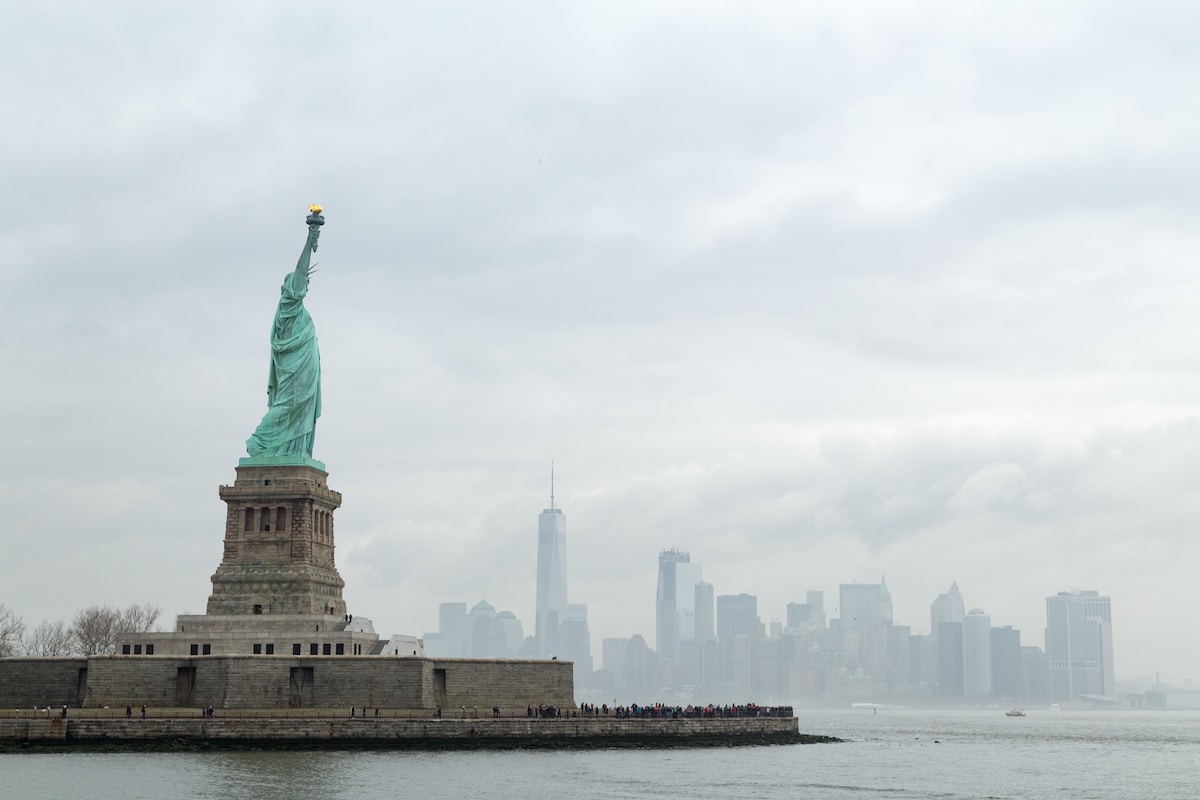
Photo: Stock Photos from Emily Neville Fisher/Shutterstock
Though it was a gift to the United States, Edouard de Laboulaye who gave the idea for the statue hoped the monument to freedom would push the French to fight for freedom under Napolean III.
Every year, 4.5 million people visit the statue.
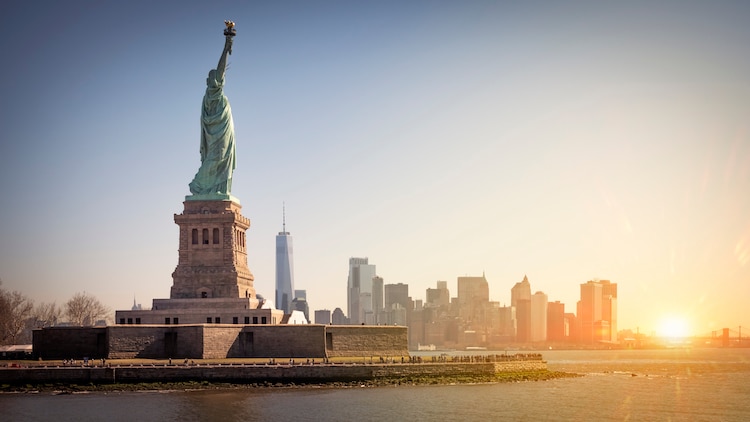
Photo: Stock Photos from Marcio Jose Bastos Silva/Shutterstock
Over 100 years later, the Statue of Liberty continues to climb in popularity. Every year, 4.5 million people flock by ferry to see the sculpture—and, in May of 2019, to visit the new Statue of Liberty Museum.
Planned to be “the most monumental addition to Liberty Island since the Statue herself,” this institution will make a trip to Lady Liberty even more meaningful, promising guests “a new way to experience history.”
DON’T FORGET YOUR CITYPASS!
My Modern Met Tip: CityPASS is the best way to see New York City's top attractions—they’re bundled to save you 42% on admission. Included are The Metropolitan Museum of Art, Guggenheim Museum, Ferry Access to Statue of Liberty and Ellis Island, 9/11 Memorial & Museum, and Empire State Building. And better yet, when you have the pass, you'll get priority entry into some of them. It’s a win-win!
This article has been edited and updated.
Related Articles:
Stroll Through the Star-Spangled History of the National Mall
See Which of the World’s Most Famous Statues Is the Tallest of All
World’s Tallest Statue Is a 600-Foot Homage to the Man Who Unified India
Restored Film Footage Shows What Life Was Like in New York City Over 100 Years Ago












































































